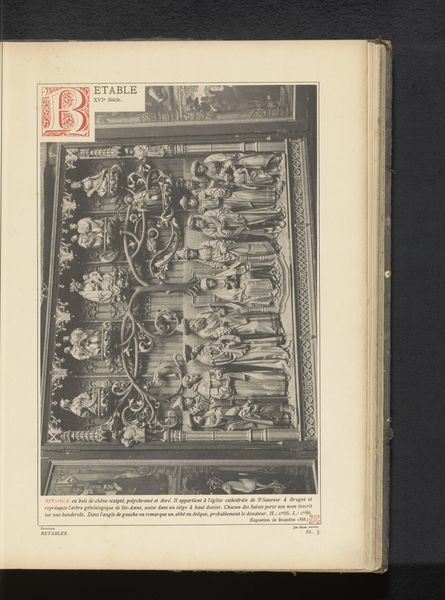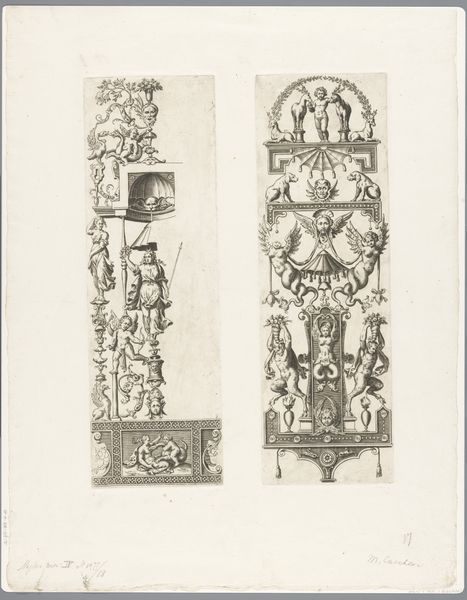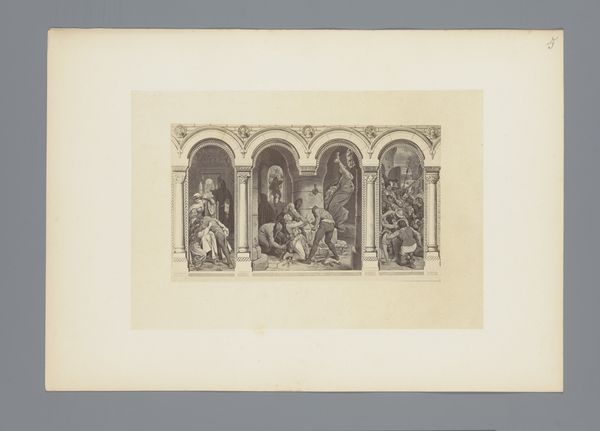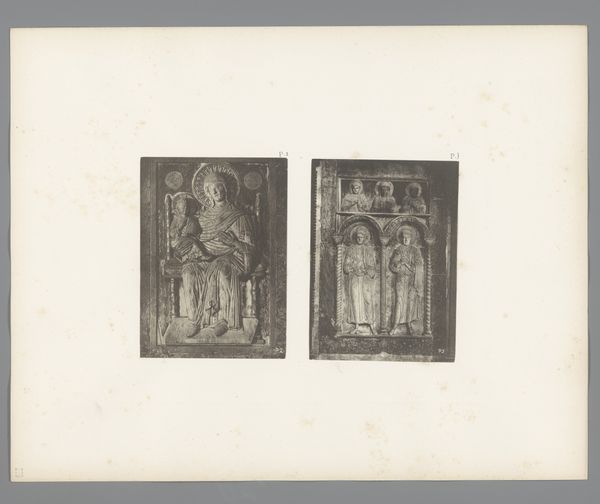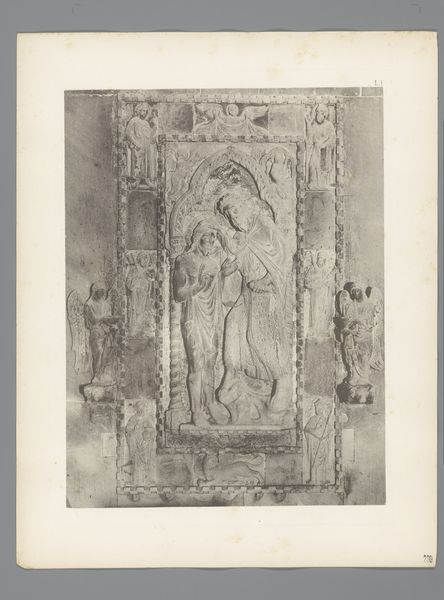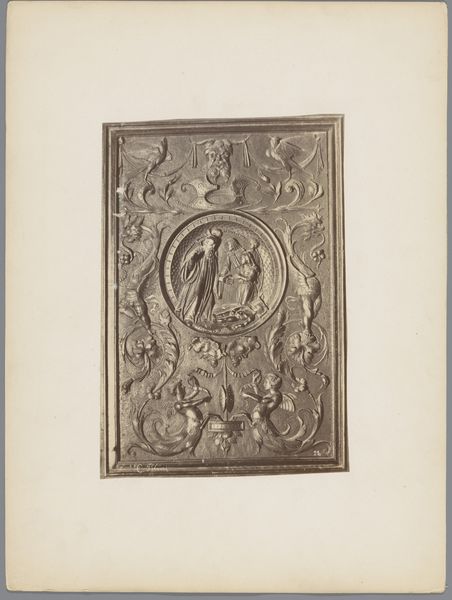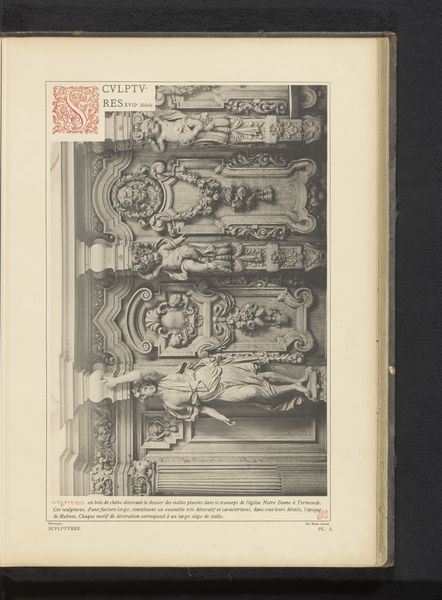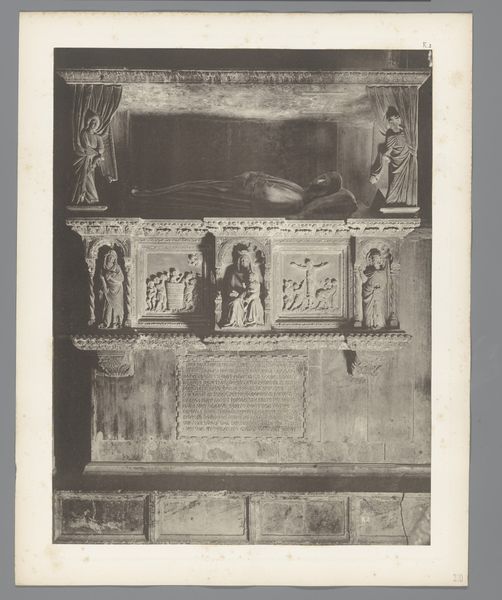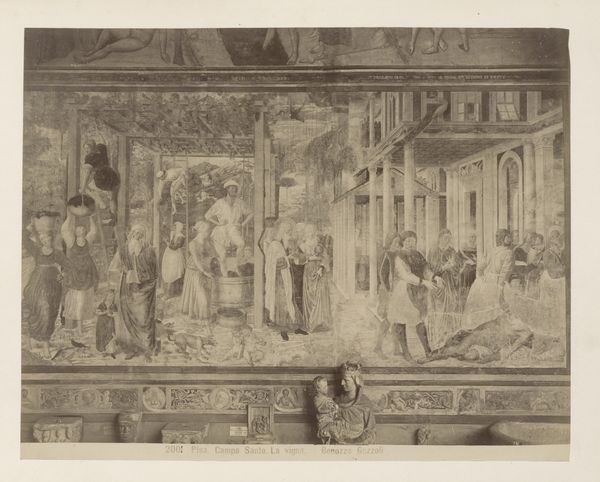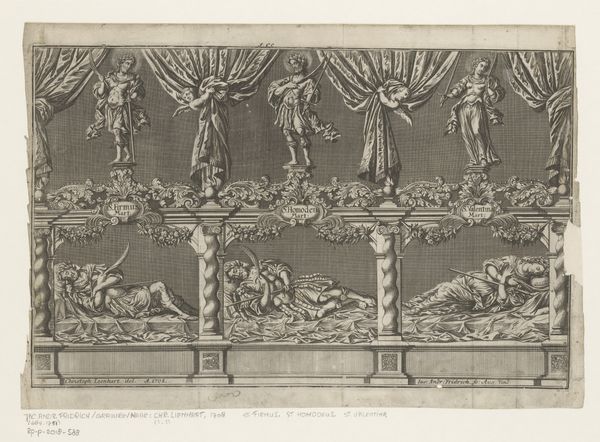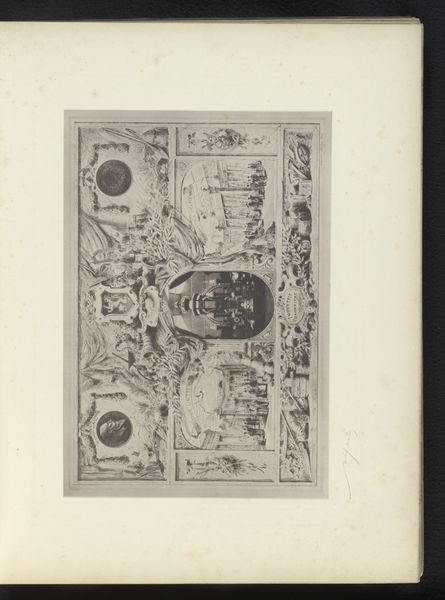
Altaar door Andrea della Robbia in de Santa Maria degli Angeli e dei Martiri te Rome 1857 - 1875
0:00
0:00
jamesanderson
Rijksmuseum
print, relief, photography, sculpture
# print
#
relief
#
11_renaissance
#
photography
#
sculpture
#
history-painting
Dimensions: height 197 mm, width 257 mm
Copyright: Rijks Museum: Open Domain
Curator: Here we have a photograph, taken by James Anderson between 1857 and 1875, of Andrea della Robbia's altar located in the Santa Maria degli Angeli e dei Martiri in Rome. Editor: The first thing that strikes me is the somberness— the monochrome tones drain any vibrancy from the original work. It gives a severe and aged quality to the overall scene. Curator: Indeed. Anderson’s photography captures the sculptural relief in meticulous detail, focusing our attention on the composition itself, how the artist utilized depth and the arrangement of figures. The architectural frame, coupled with the triptych divisions, lends a sense of structured harmony. Editor: However, this harmony feels somewhat manufactured, doesn’t it? The historical context—the fraught relationship between religious institutions and power, the way narratives like these were deployed to indoctrinate...It all complicates any straightforward aesthetic appreciation. Do you see the power dynamics at play in the presentation of these Biblical scenes? Curator: The power dynamic is present in its structure—a central, emphasized panel flanked by others of relatively equal but lesser distinction. Notice the play of vertical and horizontal lines, anchoring the visual weight and leading our eye accordingly. The narrative unfolds with deliberate clarity. Editor: Deliberate clarity that serves a specific purpose, no doubt! Considering its original location and the legacy of religious influence—one cannot ignore how such visual displays reinforced prevailing social hierarchies. The altar’s creation and subsequent veneration perpetuated particular power structures within society. Curator: Your reading brings crucial socio-political insight. My initial assessment focuses on the artistry itself, its structural integrity, balance, and deliberate composition. These formal elements speak volumes, quite apart from their functional uses. Editor: Art doesn't exist in a vacuum, does it? The form itself can often be an instrument to serve greater purposes than its sheer existence as an aesthetic creation. Curator: A fruitful divergence of perspective! Understanding an artwork benefits from considering form as well as cultural context. Editor: Precisely! That’s where art truly lives—at the nexus of its construction and impact.
Comments
No comments
Be the first to comment and join the conversation on the ultimate creative platform.
